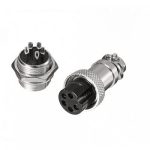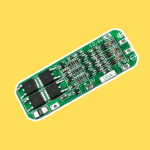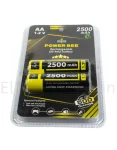Arduino Uno, powered by the ATmega328P microcontroller running at 16MHz, offers versatile functionalities for electronic projects. Here’s a detailed overview of its key specifications and features:
Introduction to Arduino Uno
Arduino Uno is a popular choice among hobbyists and professionals alike due to its ease of use and robust performance capabilities. It serves as an ideal platform for learning electronics and programming.
ATmega328P Microcontroller
The heart of Arduino Uno, the ATmega328P, operates at 16MHz and includes 32KB of flash memory, 2KB of SRAM, and 1KB of EEPROM, essential for storing program code and data.
Power Supply Options
Arduino Uno can be powered via USB or an external power supply (7-12V). It features a resettable polyfuse to protect against overcurrent scenarios, ensuring safe operation
Digital and Analog I/O
With 14 digital I/O pins and 6 analog input pins, Arduino Uno supports a wide range of input and output configurations, making it suitable for various sensor-based applications
PWM and Communication Interfaces
The board includes 6 PWM-capable digital I/O pins and supports UART, SPI, and I2C communication protocols, facilitating seamless integration with other devices and modules.
Arduino IDE Compatibility
Arduino Uno is compatible with the Arduino Integrated Development Environment (IDE), simplifying code development and uploading processes for users at all skill levels
Pricing and Cost Considerations
Available at competitive prices, Arduino Uno offers excellent value for its features and versatility, making it a cost-effective solution for both beginners and advanced users
Unleash Creativity with Arduino IDE
The Arduino IDE offers an intuitive platform to code and upload sketches effortlessly. Compatible with both Arduino Uno and Arduino Nano, this software simplifies the process of programming your Arduino microcontroller. With support for the Arduino Bluetooth module, you can explore IoT possibilities and develop cutting-edge Arduino IoT applications, enhancing connectivity and functionality.
Understanding Arduino Nano Pin Configuration
The compact and efficient Arduino Nano is ideal for smaller projects. Explore the Arduino Nano pin diagram and Arduino Nano pin configuration to utilize its features fully. Whether it’s the Arduino Nano cost or its flexible integration, this board offers a budget-friendly solution without compromising on performance. The Nano board Arduino can connect seamlessly with the Arduino Nano cord for expanded versatility.
FAQs About Arduino Uno
What are the main specifications of Arduino Uno?
Arduino Uno features the ATmega328P microcontroller, 32KB of flash memory, and 2KB of SRAM, operating at 16MHz.
How much does an Arduino Uno board cost?
The cost of Arduino Uno varies but generally falls within a reasonable range for its features. Check online retailers for current pricing.
Is Arduino Uno suitable for IoT projects?
Yes, Arduino Uno’s compatibility with various sensors and communication protocols makes it ideal for IoT applications.
Where can I buy an Arduino Uno board?
Arduino Uno boards are available through authorized distributors and online platforms like Amazon and the official Arduino store.
Can I power Arduino Uno with batteries?
Yes, Arduino Uno can be powered using an external battery connected to its power jack
What programming language does Arduino Uno use?
Arduino Uno uses a simplified version of C++ through the Arduino IDE, making it accessible to beginners.
Conclusion
Arduino Uno remains a top choice for electronic enthusiasts and professionals seeking a versatile, easy-to-use microcontroller board. Whether you’re a beginner or an experienced developer, Arduino Uno’s robust features and affordability make it a must-have for DIY projects and educational purposes.





